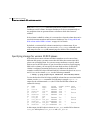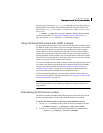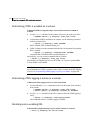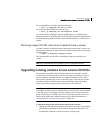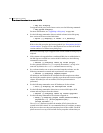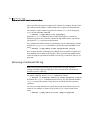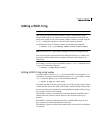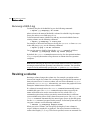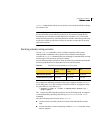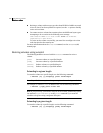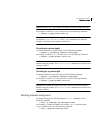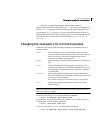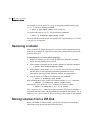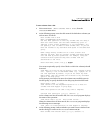
284 Administering volumes
Resizing a volume
Removing a RAID-5 log
To identify the plex of the RAID-5 log, use the following command:
# vxprint [-g diskgroup] -ht volume
where volume is the name of the RAID-5 volume. For a RAID-5 log, the output
lists a plex with a STATE field entry of LOG.
To dissociate and remove a RAID-5 log and any associated subdisks from an
existing volume, use the following command:
# vxplex [-g diskgroup] -o rm dis plex
For example, to dissociate and remove the log plex volraid-02 from volraid
in the disk group, mydg, use the following command:
# vxplex -g mydg -o rm dis volraid-02
You can also remove a RAID-5 log with the vxassist command, as follows:
# vxassist [-g diskgroup] remove log volume [nlog=n]
By default, the vxassist command removes one log. Use the optional attribute
nlog=n to specify the number of logs that are to remain after the operation
completes.
Note: When removing the log leaves the volume with less than two valid logs, a
warning is printed and the operation is not allowed to continue. The operation
may be forced by additionally specifying the -f option to vxplex or vxassist.
Resizing a volume
Resizing a volume changes the volume size. For example, you might need to
increase the length of a volume if it is no longer large enough for the amount of
data to be stored on it. To resize a volume, use one of the commands:
vxresize
(preferred),
vxassist, or vxvol. Alternatively, you can use the graphical Veritas
Enterprise Administrator (VEA) to resize volumes.
If a volume is increased in size, the vxassist command automatically locates
available disk space. The
vxresize command requires that you specify the
names of the disks to be used to increase the size of a volume. The
vxvol
command requires that you have previously ensured that there is sufficient
space available in the plexes of the volume to increase its size. The
vxassist and
vxresize commands automatically free unused space for use by the disk group.
For the
vxvol command, you must do this yourself. To find out by how much you
can grow a volume, use the following command:
# vxassist [-g diskgroup] maxgrow volume
When you resize a volume, you can specify the length of a new volume in
sectors, kilobytes, megabytes, or gigabytes. The unit of measure is added as a
suffix to the length (s, m, k, or g). If no unit is specified, sectors are assumed. The



